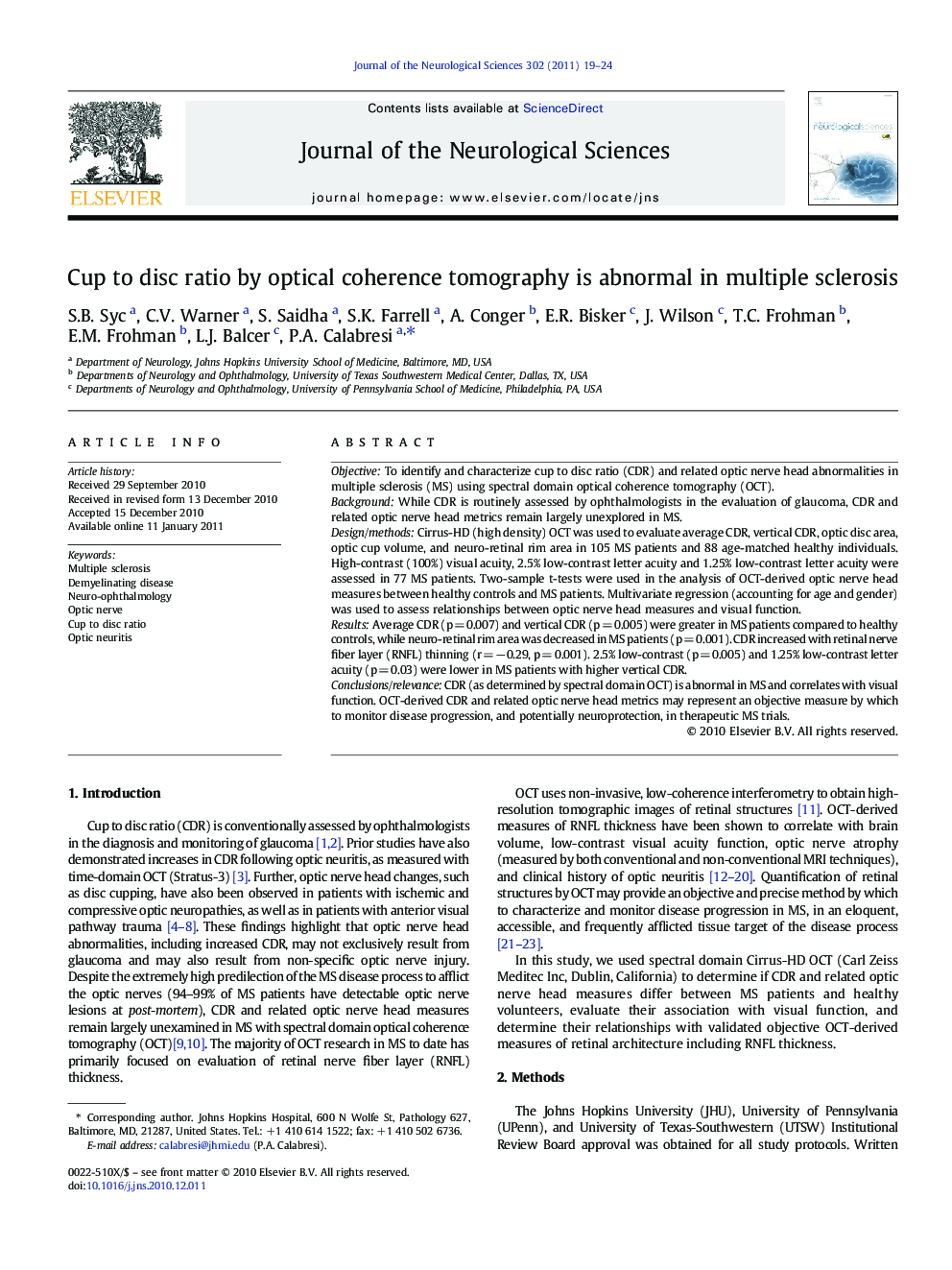| Article ID | Journal | Published Year | Pages | File Type |
|---|---|---|---|---|
| 1914263 | Journal of the Neurological Sciences | 2011 | 6 Pages |
ObjectiveTo identify and characterize cup to disc ratio (CDR) and related optic nerve head abnormalities in multiple sclerosis (MS) using spectral domain optical coherence tomography (OCT).BackgroundWhile CDR is routinely assessed by ophthalmologists in the evaluation of glaucoma, CDR and related optic nerve head metrics remain largely unexplored in MS.Design/methodsCirrus-HD (high density) OCT was used to evaluate average CDR, vertical CDR, optic disc area, optic cup volume, and neuro-retinal rim area in 105 MS patients and 88 age-matched healthy individuals. High-contrast (100%) visual acuity, 2.5% low-contrast letter acuity and 1.25% low-contrast letter acuity were assessed in 77 MS patients. Two-sample t-tests were used in the analysis of OCT-derived optic nerve head measures between healthy controls and MS patients. Multivariate regression (accounting for age and gender) was used to assess relationships between optic nerve head measures and visual function.ResultsAverage CDR (p = 0.007) and vertical CDR (p = 0.005) were greater in MS patients compared to healthy controls, while neuro-retinal rim area was decreased in MS patients (p = 0.001). CDR increased with retinal nerve fiber layer (RNFL) thinning (r = −0.29, p = 0.001). 2.5% low-contrast (p = 0.005) and 1.25% low-contrast letter acuity (p = 0.03) were lower in MS patients with higher vertical CDR.Conclusions/relevanceCDR (as determined by spectral domain OCT) is abnormal in MS and correlates with visual function. OCT-derived CDR and related optic nerve head metrics may represent an objective measure by which to monitor disease progression, and potentially neuroprotection, in therapeutic MS trials.
